Wednesday, August 6, 2025
12 Best Social Media Analytics Tools for 2025 (Ranked)

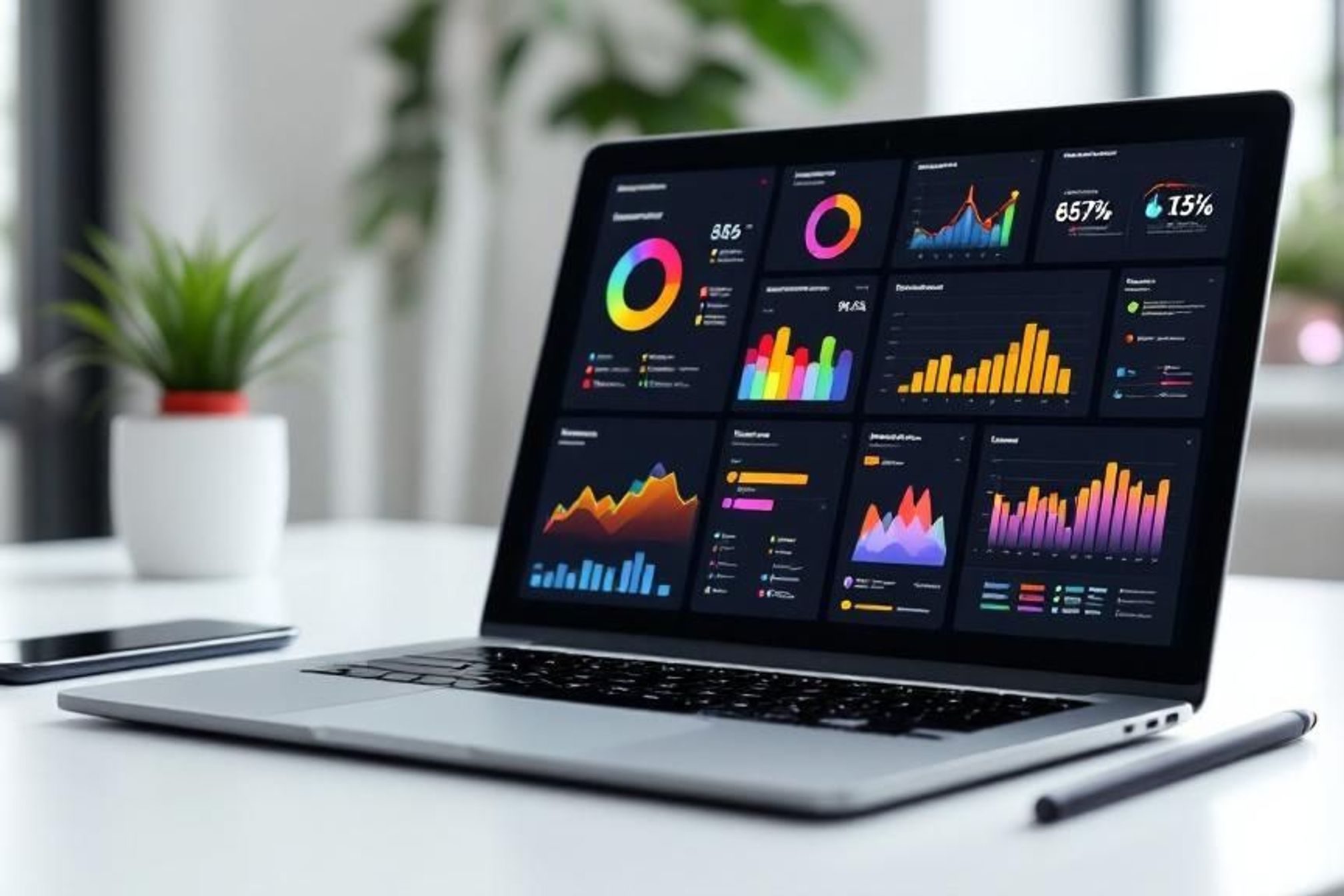
Navigating the vast sea of social media data can feel overwhelming. Without the right tools, metrics like engagement rates, reach, and follower growth are just numbers-devoid of the strategic insights needed to drive meaningful results. This guide is designed to cut through the noise, providing a direct path to identifying the best social media analytics tools for your specific needs, whether you're a solo content creator, a digital marketing professional, or a large enterprise brand manager.
The core challenge these platforms solve is translating raw social media activity into actionable business intelligence. They help you understand what content resonates, when your audience is most active, how your competitors are performing, and ultimately, the return on investment (ROI) of your social media efforts. Instead of manually compiling data from different networks, a dedicated analytics tool automates this process, saving you countless hours while uncovering patterns you might otherwise miss.
In this comprehensive resource, we will dive deep into the top platforms available today. We’ll move beyond marketing jargon and generic feature lists to provide a practical, in-depth analysis of each tool. For every platform, you will find:
- A detailed breakdown of its core features and strengths.
- Honest assessments of potential limitations and drawbacks.
- Specific use-case scenarios to help you visualize its application.
- Clear pricing information and implementation considerations.
- Screenshots and direct links to get you started immediately.
This listicle is structured to be your definitive guide, helping you move from confusion to clarity. Our goal is to equip you with the information necessary to select a tool that not only tracks your metrics but also empowers you to build a more effective and data-driven social media strategy. Let's explore the solutions that will transform your data into decisions.
1. Schedul
Schedul solidifies its position as a top-tier choice by expertly blending powerful content scheduling with robust, integrated analytics. While primarily known as a publishing powerhouse for text-centric platforms like X (formerly Twitter), Threads, and LinkedIn, its analytical capabilities are what make it one of the best social media analytics tools for creators and brands focused on narrative-driven growth. It empowers users to move beyond simple post scheduling and into a cycle of strategic content creation, performance measurement, and data-backed optimization.
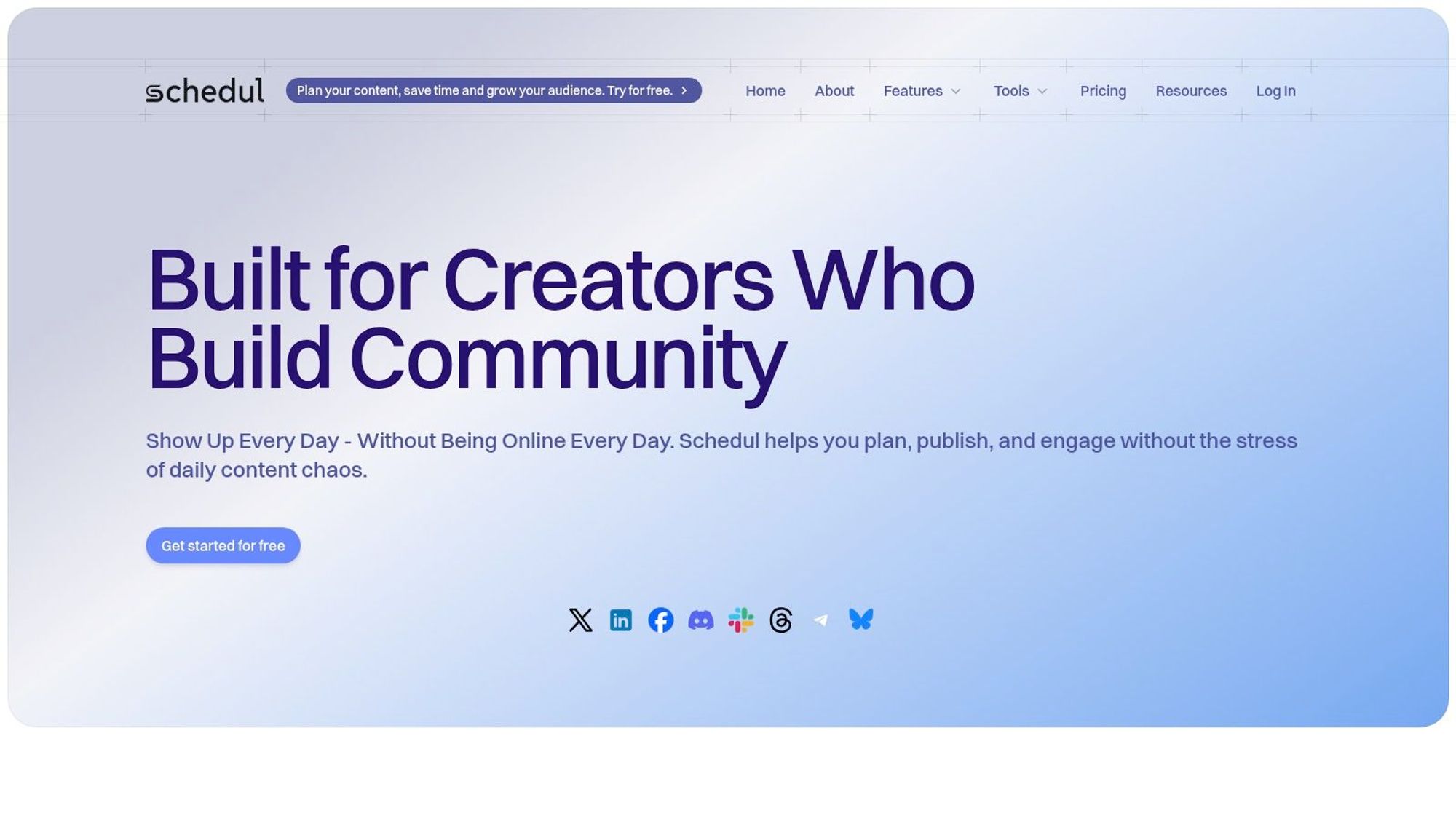
What truly sets Schedul apart is how it embeds analytics directly into the content workflow. The platform doesn't just show you post-performance metrics; it provides the insights needed to refine your strategy directly within the same interface you use to plan and publish. This seamless integration eliminates the need to switch between multiple apps, creating a highly efficient loop of planning, executing, and analyzing.
Key Features & Analysis
Schedul’s strength lies in its unified approach. The dynamic visual calendar is not just for plotting posts; it’s a strategic command center. You can visualize your content cadence across networks and immediately correlate it with engagement spikes or lulls identified in the analytics dashboard.
- Integrated Analytics & ROI Tracking: The platform provides clear, actionable data on engagement, reach, and follower growth. A standout feature is the integrated Social Media ROI Calculator, which helps translate engagement metrics into tangible business value, a crucial function for marketers needing to justify their social media spend.
- Strategic Crossposting: Effortlessly publish and tailor content for multiple text-focused networks. This saves significant time while ensuring your message remains consistent yet platform-appropriate.
- Content Hub & Creation Tools: Schedul offers unique complementary tools like a Caption Generator and a Threads Carousel Builder. These tools, supported by educational resources, ensure the content you analyze is high-quality from the start.
Practical Use Case
A digital marketing manager for a B2B tech firm can use Schedul to manage their CEO's presence on LinkedIn and X. They can schedule a month of thought leadership content using the visual calendar, then use the analytics dashboard to identify which topics generate the most engagement and profile clicks. Based on these insights, they can refine the next month's content to focus on high-performing themes, directly tying content strategy to measurable results like lead generation and brand authority.
| Feature | Primary Benefit |
|---|---|
| Unified Analytics | Track performance across networks in one dashboard for a holistic view. |
| Crossposting | Maintain consistent brand messaging with minimal manual effort. |
| Mobile-First Design | Manage and analyze your social media presence from anywhere, on any device. |
| Content Creation Tools | Enhance post quality and creativity without leaving the platform. |
Pros:
- Seamlessly crossposts across multiple text-centric social networks.
- Robust analytics and integrated ROI tracking empower data-driven decisions.
- Comprehensive Content Hub with actionable guides and unique creation tools.
- Intuitive visual content calendar centralizes workflows for consistent posting.
Cons:
- Primarily focused on text-based platforms, limiting its utility for visual-heavy strategies (e.g., Instagram Reels, Pinterest).
- Advanced features may present a slight learning curve for beginners.
Pricing: Schedul offers flexible pricing tiers, including a free plan for users to get started. Paid plans unlock more advanced features and a higher volume of connected accounts.
Website: https://www.schedulethreads.com
2. Brandwatch
Brandwatch positions itself as a premier digital consumer intelligence platform, making it one of the best social media analytics tools for enterprises focused on deep listening and brand perception. It moves beyond standard metrics to offer nuanced insights into online conversations, consumer sentiment, and emerging trends. This tool is exceptional for large-scale market research and tracking brand health across a vast digital landscape.

Its core strength lies in its extensive data-gathering capabilities. Brandwatch monitors over 100 million sources, including blogs, forums, news sites, and social networks, providing a truly comprehensive view of your brand’s digital footprint. For an in-depth exploration of how Brandwatch fits into the broader ecosystem, you can learn more about its role in social media monitoring tools.
Key Features & Analysis
- Advanced Social Listening: Brandwatch excels at capturing and analyzing brand mentions, even those that don't directly tag your profiles. Its sophisticated query-building logic allows you to pinpoint specific conversations with high accuracy.
- Customizable Dashboards: Users can build dashboards from scratch, focusing only on the KPIs that matter most to their campaigns. This flexibility is crucial for reporting to different stakeholders.
- Competitor Benchmarking: The platform makes it straightforward to set up detailed tracking for competitors, allowing you to compare share of voice, sentiment, and key topics of discussion side-by-side.
Pricing & Suitability
Brandwatch operates on a custom pricing model tailored to enterprise needs, which means it’s a significant investment. This makes it less accessible for small businesses or individual creators.
- Pros: Incredible data depth, powerful analytics and reporting, and a clean user interface.
- Cons: High cost and a steeper learning curve for mastering its advanced query features.
Website: https://brandwatch.com/
3. Sprout Social
Sprout Social is a comprehensive social media management platform that excels at blending robust analytics with user-friendly publishing and engagement tools. It stands out as one of the best social media analytics tools for teams that need an all-in-one solution to manage their entire social strategy, from content scheduling to performance reporting. Its intuitive design makes sophisticated analytics accessible to users of all skill levels, empowering businesses to make data-driven decisions without a steep learning curve.
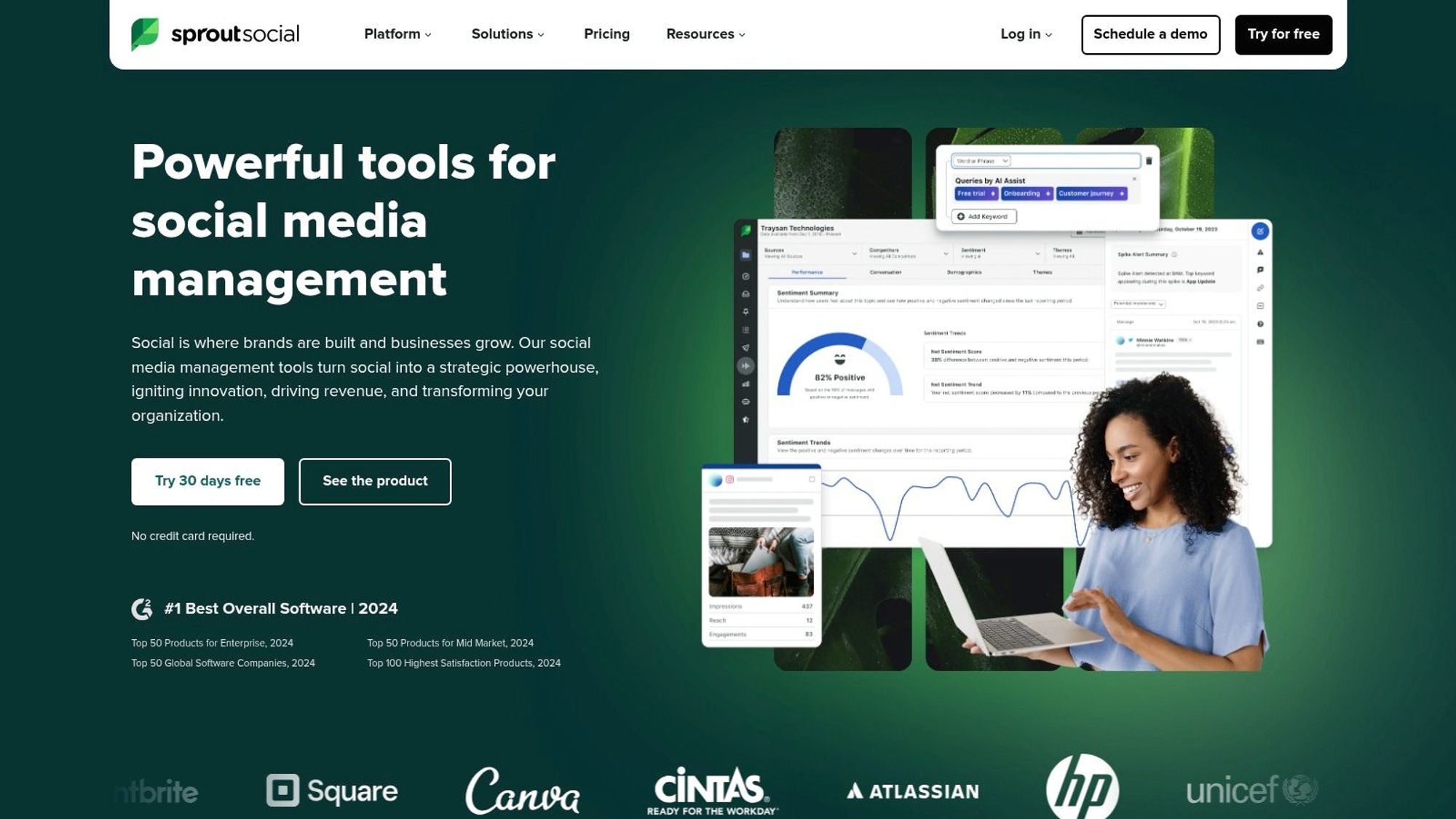
The platform’s strength is its ability to unify analytics across multiple networks into a single, cohesive view. Sprout Social makes it easy to generate presentation-ready reports that clearly demonstrate ROI and campaign effectiveness. For teams considering their options, exploring alternatives can provide a clearer picture of how Sprout Social fits into the market; you can learn more about Sprout Social and its competitors to make an informed choice.
Key Features & Analysis
- Cross-Platform Analytics: Sprout Social offers detailed reports that can be segmented by network, profile, or specific timeframes. Users can track everything from post-level engagement to high-level audience growth trends.
- Integrated Social Listening: The platform includes powerful listening tools that help you track brand sentiment, identify industry trends, and monitor relevant keywords, providing valuable context for your analytics data.
- Detailed Competitor Analysis: You can easily generate reports comparing your performance against competitors on key metrics like audience growth, engagement rates, and publishing frequency.
Pricing & Suitability
Sprout Social uses a per-user pricing model, with plans starting at a higher price point than some entry-level tools. While its Standard plan offers solid features, advanced analytics and listening are reserved for the Professional and Advanced tiers.
- Pros: Highly intuitive user interface, comprehensive reporting capabilities, and strong customer support.
- Cons: Higher cost compared to some competitors, and some reporting customization is limited in lower-tier plans.
Website: https://sproutsocial.com/
4. Hootsuite
Hootsuite is one of the most established names in social media management, offering a powerful all-in-one platform that combines scheduling, monitoring, and analytics. While widely known for its scheduling capabilities, its strength as one of the best social media analytics tools lies in its ability to provide a centralized view of performance across multiple networks, making it ideal for teams managing a diverse social media presence.

The platform's analytics suite, Hootsuite Analytics, allows users to track hundreds of key metrics, measure ROI, and create comprehensive, customizable reports. It simplifies the process of demonstrating the value of social media efforts to stakeholders. For those exploring different platforms, understanding the landscape of Hootsuite alternatives can provide valuable context.
Key Features & Analysis
- Comprehensive Performance Tracking: Hootsuite enables you to track account growth, engagement rates, and post-performance across networks like Facebook, Instagram, Twitter, LinkedIn, and Pinterest, all from a single dashboard.
- Team Collaboration & Productivity: The platform tracks team performance metrics, such as resolution and response times for customer inquiries, which is invaluable for social media customer service teams.
- Customizable Reporting: Users can build reports from pre-made templates or create them from scratch. Reports can be easily exported and shared, streamlining the communication of social media impact.
Pricing & Suitability
Hootsuite offers tiered pricing, including a very limited free plan for individuals. Paid plans start with the Professional tier, scaling up to Business and Enterprise solutions for larger organizations with more complex needs.
- Pros: Supports an extensive range of social networks, strong team collaboration features, and robust reporting capabilities.
- Cons: The user interface can feel cluttered and overwhelming for beginners, and many of the more advanced analytics features are locked behind expensive higher-tier plans.
Website: https://hootsuite.com/
5. Mention
Mention offers a powerful combination of social listening and media monitoring, solidifying its place among the best social media analytics tools, especially for businesses that need real-time insights. It is designed to track brand mentions across social media and the broader web, making it ideal for managing brand reputation and conducting competitive analysis without a hefty enterprise price tag. The platform is particularly effective for those who want to react quickly to online conversations.
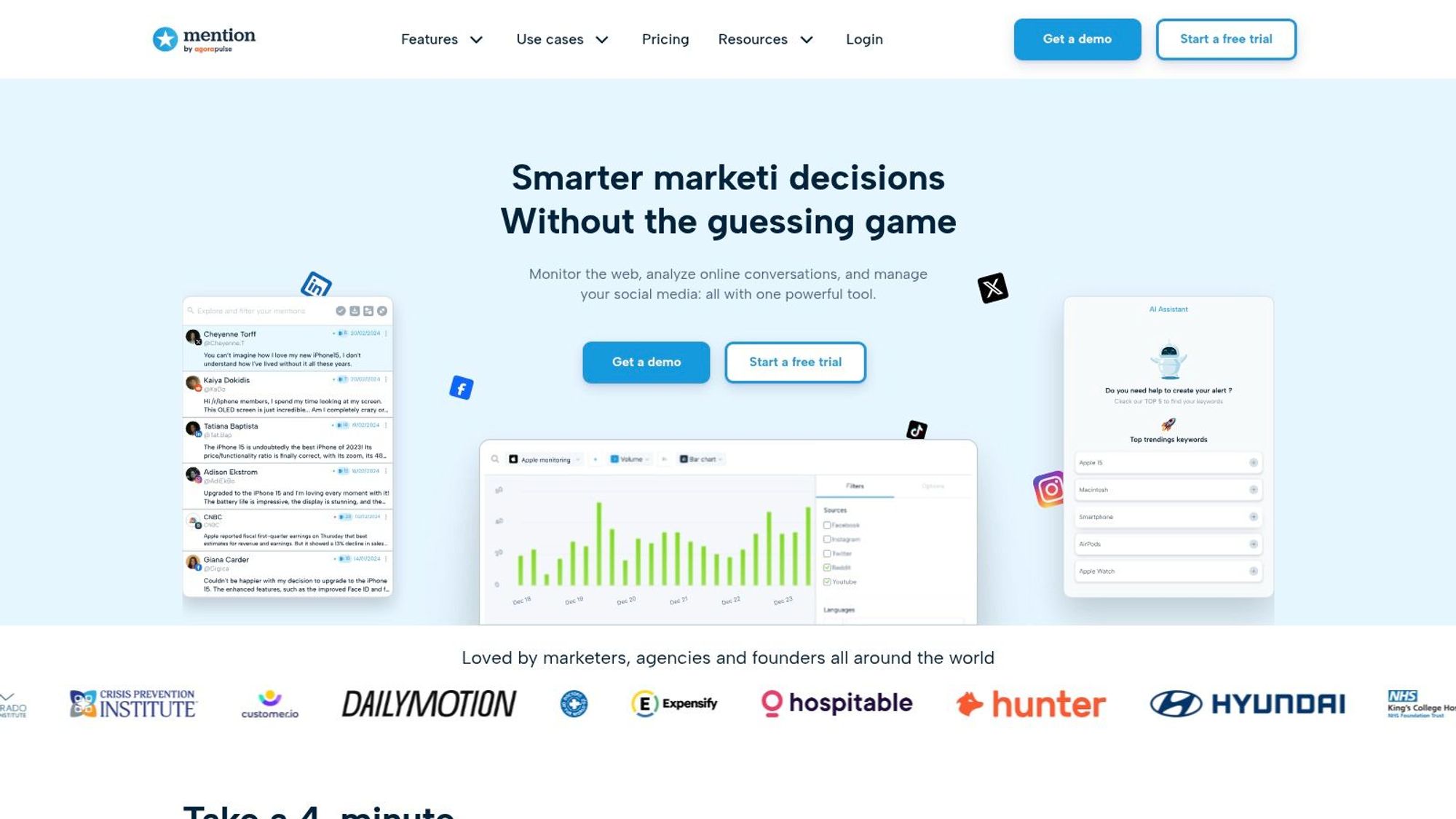
Its primary strength is its real-time alert system, which ensures you never miss a critical conversation. Mention monitors millions of sources in over 40 languages, from social networks like Instagram and Twitter to blogs, forums, and news sites. This comprehensive coverage allows you to get a complete picture of your brand's presence and engage with your audience proactively.
Key Features & Analysis
- Real-Time Monitoring: Mention sends instant alerts for new brand mentions, allowing for immediate engagement or crisis management. This is invaluable for customer service and reputation management.
- Competitive Analysis: The tool simplifies tracking competitors by monitoring their mentions, content performance, and share of voice. This helps you identify strategic opportunities and benchmark your performance.
- Sentiment Analysis: Automatically gauges the sentiment (positive, negative, or neutral) behind mentions, providing a quick overview of how your brand is perceived online.
Pricing & Suitability
Mention offers several pricing tiers, including a free plan for basic monitoring and more comprehensive paid plans starting from a relatively affordable price point. This makes it highly accessible for small to medium-sized businesses, freelancers, and startups.
- Pros: User-friendly interface, comprehensive coverage of online sources, and affordable pricing for small businesses.
- Cons: Limited historical data on lower-tier plans, and advanced features like API access and in-depth analytics are reserved for higher-tier subscriptions.
Website: https://mention.com/
6. Buffer
Buffer is renowned for its simplicity and affordability, making it one of the best social media analytics tools for small businesses, individuals, and teams just starting to formalize their social media strategy. While widely known for its powerful scheduling features, its analytics suite provides clear, actionable insights without overwhelming users with data. It’s designed for efficiency, helping you understand what content resonates with your audience and how to optimize your posting schedule.
The platform’s strength lies in its clean, intuitive interface that simplifies social media management. Buffer integrates publishing and analytics seamlessly, allowing you to track post-performance directly and make informed decisions for future content. For those exploring different platforms with a similar user-friendly approach, you can discover a range of Buffer alternatives.
Key Features & Analysis
- Straightforward Analytics & Reporting: Buffer provides essential metrics like reach, engagement, and clicks in an easy-to-digest format. You can quickly see your top-performing posts and understand audience growth over time.
- Post Scheduling and Publishing: A core feature that allows you to plan and automate content across multiple networks, ensuring a consistent online presence. The analytics are directly tied to these scheduled posts.
- Team Collaboration: The platform includes features for team members to draft, approve, and manage social media posts, making it suitable for small marketing teams that need a streamlined workflow.
Pricing & Suitability
Buffer offers a free plan with basic publishing tools, but its analytics capabilities are unlocked in the paid tiers, which are competitively priced. This makes it an accessible entry point for users on a budget.
- Pros: Extremely simple and intuitive interface, affordable pricing plans, and excellent support for multiple social networks.
- Cons: The free plan has very limited features, and accessing more advanced analytics requires upgrading to higher-tier plans.
Website: https://buffer.com/
7. Rival IQ
Rival IQ carves out its niche by focusing intensely on competitive benchmarking, making it one of the best social media analytics tools for brands that want to understand their performance relative to their industry. It provides exceptionally detailed insights into what competitors are doing, what’s working for them, and where opportunities lie. This tool is ideal for agencies and marketing teams needing to justify strategy with hard data and create data-driven social media reports.

Its core value is transforming raw social data into actionable competitive intelligence. Rival IQ automates the process of tracking competitor activity across all major social platforms, analyzing posting frequency, engagement rates, and content strategies. For those looking to dive deeper, you can learn more about how Rival IQ stands out among social media competitor analysis tools.
Key Features & Analysis
- Competitor Analysis: Rival IQ provides side-by-side comparisons of your social media performance against any competitor. It automatically tracks follower growth, engagement rates, and top-performing content, highlighting strategic gaps.
- Social Media Audits: The platform can generate comprehensive social media audits in minutes. It analyzes your historical data and benchmarks it against your "landscape" of competitors, offering a clear picture of your strengths and weaknesses.
- Customizable Reporting: Users can easily create and schedule branded reports that are easy for stakeholders to understand. Reports can be tailored to show specific metrics, from post-level engagement to high-level audience growth trends.
Pricing & Suitability
Rival IQ's pricing is tiered, starting with plans suitable for small teams and scaling up to agency and enterprise solutions. While not the cheapest option, its focused feature set provides significant value for competitive analysis.
- Pros: Detailed insights into competitors' performance, user-friendly dashboards, and comprehensive data export options.
- Cons: Higher pricing may not suit all small businesses, and it has limited integrations with other marketing platforms outside of social media.
Website: https://www.rivaliq.com/
8. Keyhole
Keyhole specializes in real-time social media analytics, offering powerful hashtag and keyword tracking that makes it one of the best social media analytics tools for live campaign monitoring. Its primary strength is providing an immediate, easy-to-understand view of how specific content, events, or topics are performing across major platforms like X (formerly Twitter) and Instagram. This makes it an invaluable asset for agencies and brands that need to report on campaign ROI and identify influential voices in real-time.
The platform is designed around simplicity and speed, translating complex data into visually appealing and shareable dashboards. Keyhole’s focus on live tracking helps marketers quickly gauge public sentiment, measure reach, and discover user-generated content associated with their campaigns, allowing for agile strategy adjustments.
Key Features & Analysis
- Real-Time Hashtag & Keyword Tracking: Keyhole provides up-to-the-minute data on hashtag usage, reach, impressions, and top posts. This is ideal for tracking event engagement, brand mentions, or viral trends as they happen.
- Influencer Identification & Tracking: The tool automatically identifies and ranks the most influential users participating in a conversation around your tracked keywords. This helps you pinpoint potential brand advocates or measure an existing influencer’s impact.
- Automated & Beautiful Reporting: Keyhole excels at generating clean, professional-looking reports that can be easily shared with clients or stakeholders. The dashboards are intuitive, presenting key metrics without overwhelming the user.
Pricing & Suitability
Keyhole offers several pricing tiers starting from a plan for individuals and small businesses up to custom enterprise solutions. While more accessible than some enterprise-only tools, the cost can still be a consideration for smaller entities, and historical data access is limited on lower-tier plans.
- Pros: Excellent real-time tracking capabilities, intuitive user interface, and strong reporting features.
- Cons: Basic plans have limitations on historical data, and the pricing may be prohibitive for individual creators or very small businesses.
Website: https://keyhole.co/
9. Social Status
Social Status is engineered for businesses and agencies that need streamlined, automated social media reporting without a hefty price tag. It distinguishes itself by focusing on delivering comprehensive performance analytics across multiple platforms in an accessible format. This makes it one of the best social media analytics tools for teams that prioritize efficient, data-rich reporting and competitor analysis over deep social listening.
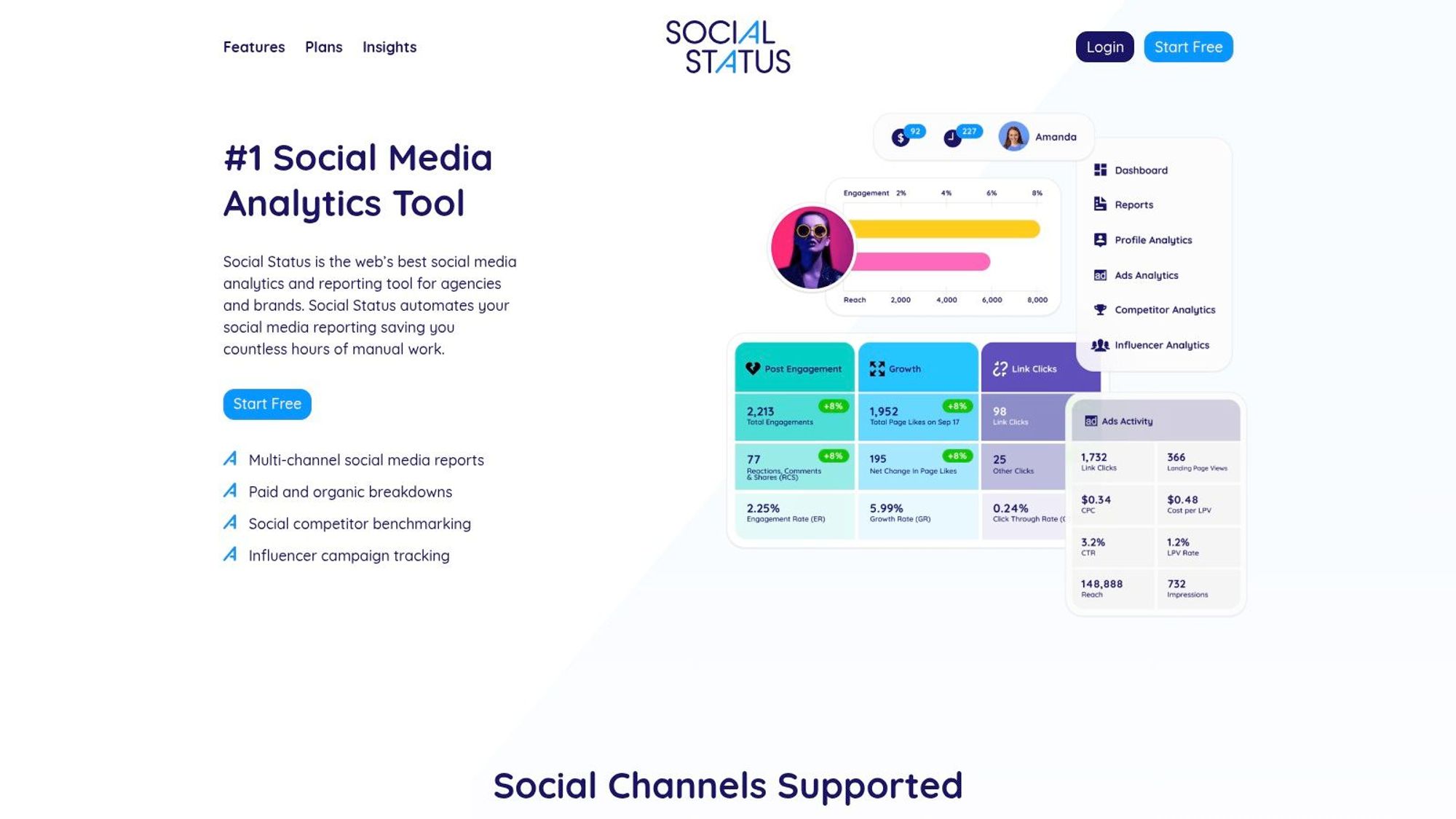
The platform’s strength lies in its ability to quickly generate professional, presentation-ready reports that cover all essential metrics. It supports major platforms like Facebook, Instagram, X (formerly Twitter), LinkedIn, and YouTube, allowing users to consolidate their analytics efforts into a single dashboard. This focus on clear, comparative data makes it a practical choice for demonstrating ROI to clients or internal stakeholders.
Key Features & Analysis
- Automated Reporting: Schedule daily, weekly, or monthly reports to be sent directly to your inbox or clients. You can export them in various formats, including PDF, PowerPoint, and Google Slides.
- Competitor Benchmarking: Easily track competitor profiles to compare your performance across key metrics like follower growth, engagement rates, and content strategy.
- Influencer Analytics: Analyze the performance of influencer campaigns by tracking specific sponsored posts, measuring reach and engagement to determine campaign effectiveness.
Pricing & Suitability
Social Status offers a range of affordable plans, including a free tier for basic profile analytics, making it highly accessible. Paid plans scale up based on the number of profiles and features needed, catering to freelancers, small businesses, and agencies.
- Pros: Very affordable pricing, comprehensive and easy-to-understand reporting features, and excellent multi-platform support.
- Cons: The user interface can feel slightly dated compared to newer tools, and it has limited integrations with other marketing software.
Website: https://socialstatus.io/
10. Iconosquare
Iconosquare is a specialized social media analytics and management tool that shines for businesses and creators heavily invested in Instagram and Facebook. Its platform is designed to provide actionable insights into content performance, audience engagement, and overall profile growth, making it a powerful ally for visually-driven brands. The tool excels at demystifying complex metrics and presenting them in an accessible, easy-to-digest format.
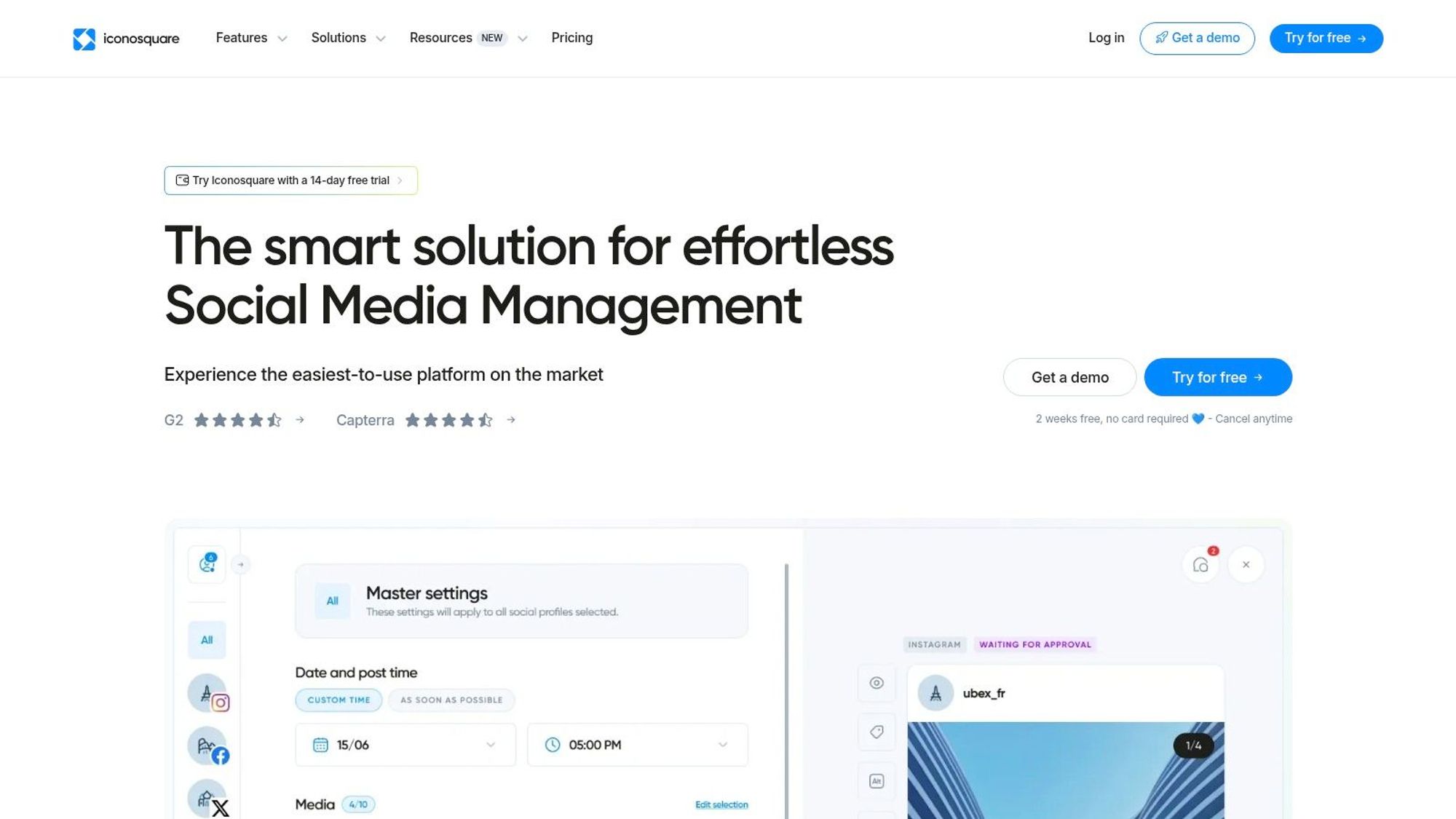
Its strength lies in its focused approach. Unlike broader platforms, Iconosquare offers deep analytics specifically for Instagram and Facebook, including detailed post-level data, optimal posting times, and follower demographics. This makes it one of the best social media analytics tools for small to medium-sized businesses looking for affordable yet robust performance tracking without the complexity of an enterprise-level suite.
Key Features & Analysis
- In-depth Instagram & Facebook Analytics: Provides detailed metrics on reach, engagement rates, follower evolution, story performance, and audience demographics. It helps you understand exactly what content resonates with your followers.
- Content Scheduling: An integrated content scheduler allows users to plan and automate posts for Instagram, Facebook, and other supported platforms directly within the dashboard, streamlining workflow.
- Competitor Tracking: Users can monitor key competitors to benchmark their performance, track their content strategy, and identify opportunities to gain a competitive edge.
Pricing & Suitability
Iconosquare offers tiered pricing starting with affordable plans for single users and small teams, making it highly accessible. A free trial is available to test its capabilities.
- Pros: Very user-friendly interface, detailed and easy-to-understand performance metrics, and affordable pricing for small businesses.
- Cons: Limited platform support beyond the Meta ecosystem (Instagram, Facebook), and some advanced analytics are gated behind higher-tier plans.
Website: https://iconosquare.com/
11. Sprinklr
Sprinklr positions itself as a unified customer experience management (Unified-CXM) platform, going far beyond typical social media analytics. It’s an enterprise-grade solution built for large organizations needing to manage social media, marketing, research, and customer care from a single, integrated hub. This tool is ideal for global brands aiming to standardize their digital customer interactions and gain a holistic view of the customer journey across numerous touchpoints.
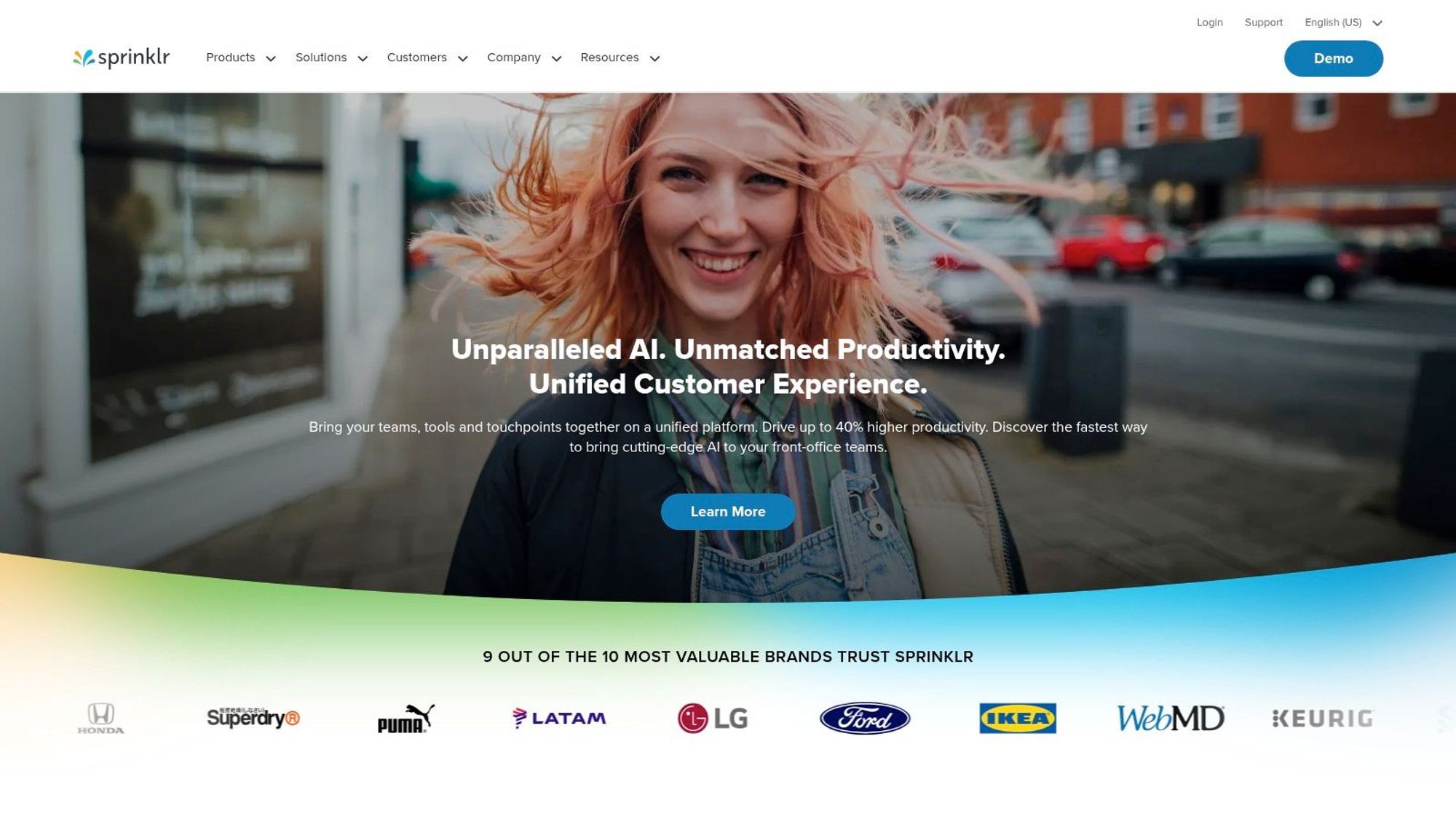
Its core strength is its all-in-one architecture, which eliminates data silos between departments. Sprinklr pulls data from over 30 digital and social channels, including advertising and customer service interactions, to create a comprehensive profile for each customer. This makes it one of the best social media analytics tools for enterprises that prioritize a unified operational view over standalone social media metrics.
Key Features & Analysis
- Unified Customer Experience Management: Sprinklr combines social listening, analytics, content marketing, paid media, and customer service into one platform, allowing for seamless cross-departmental collaboration.
- Advanced Analytics and Reporting: The platform offers powerful AI-driven insights to analyze vast amounts of unstructured data. It can track sentiment, trends, and competitive intelligence with a high degree of granularity.
- Social Listening and Engagement: Its robust listening engine helps brands monitor conversations globally, while its engagement tools enable teams to respond to customers directly from the dashboard, ensuring brand consistency.
Pricing & Suitability
Sprinklr is tailored for the enterprise market, and its pricing is provided on a custom basis. The investment is substantial, reflecting its extensive capabilities and the complexity of its implementation.
- Pros: Extremely comprehensive feature set, highly scalable for global enterprises, and powerful integration with other business systems.
- Cons: Very high cost, a complex platform with a steep learning curve, and may be overwhelming for teams needing only core analytics.
Website: https://sprinklr.com/
12. Social Blade
Social Blade is a publicly accessible analytics platform known for tracking user statistics and growth trends, particularly for content creators on platforms like YouTube, Twitch, Instagram, and X (formerly Twitter). While not a traditional, deep-dive business intelligence tool, it serves a crucial role for individuals and brands wanting quick, high-level competitor insights or to track the public-facing growth of influencers and creators. It excels at providing a straightforward, numbers-based snapshot of performance.
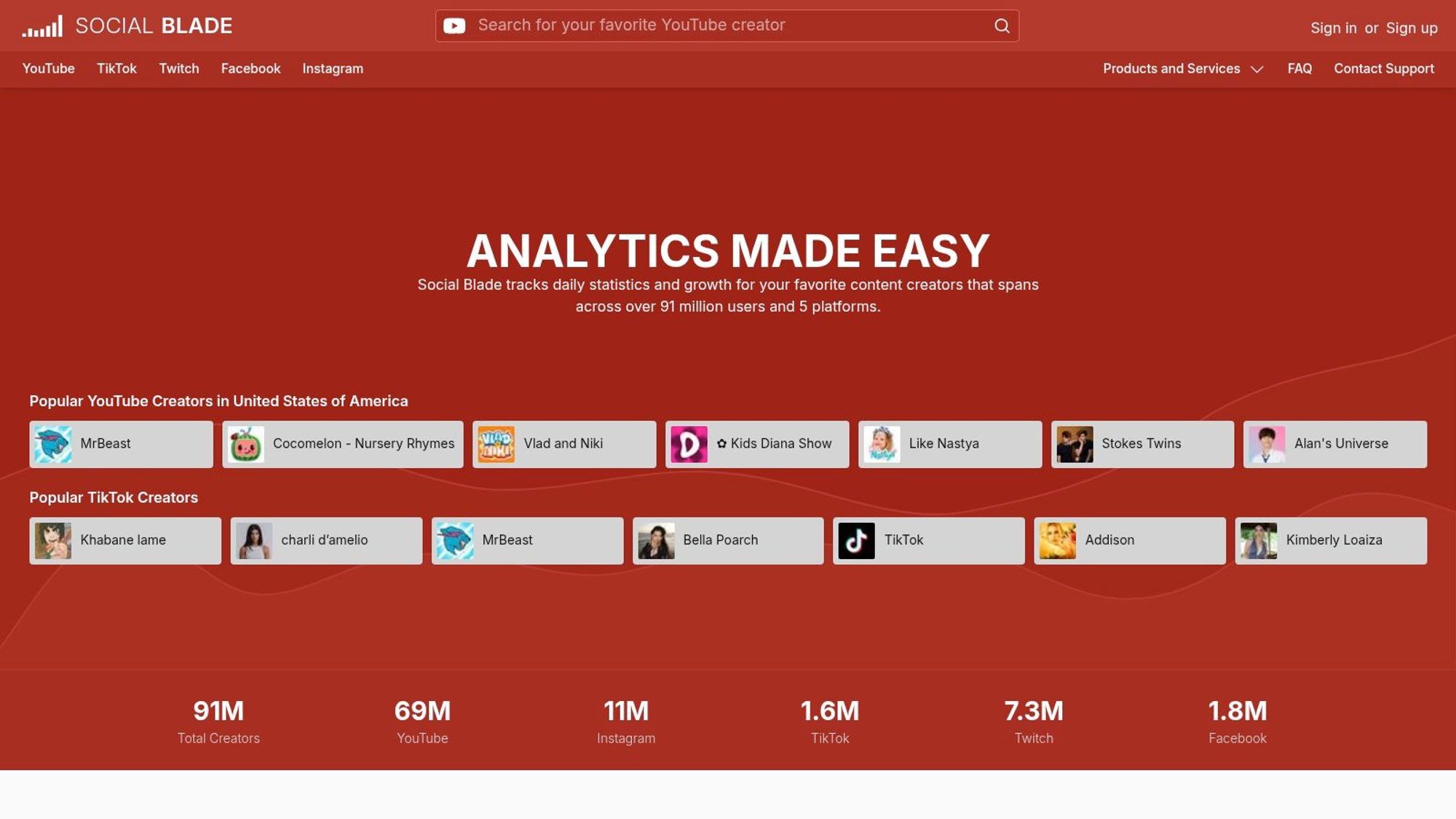
Its primary appeal lies in its simplicity and accessibility. Anyone can search for a public profile on supported platforms and see historical data on follower counts, video views, and estimated earnings. This makes it one of the best social media analytics tools for on-the-fly research without needing account access, making it invaluable for influencer vetting or a quick competitive overview.
Key Features & Analysis
- User Statistics Tracking: Social Blade provides daily tracking of key public metrics like subscriber/follower counts, video views, and social media engagement, presented in easy-to-read charts.
- Growth Trend Analysis: The platform’s core function is visualizing growth over time. You can easily spot sudden spikes or drops in followers, which can indicate viral content or other significant events.
- Platform Comparisons: It allows users to compare statistics for up to three channels side-by-side, offering a simple way to benchmark performance against direct competitors or industry peers.
Pricing & Suitability
Social Blade's core data is available for free, making it highly accessible. It offers premium tiers (starting from $3.99/month) that remove ads and provide more detailed data and reporting features. It’s best suited for individual creators, small agencies, and marketers who need public-facing data.
- Pros: Free access to basic analytics, supports a wide range of platforms, and has a very easy-to-use interface.
- Cons: Data accuracy can sometimes be inconsistent as it relies on public APIs, and it lacks the advanced sentiment and demographic analysis of enterprise tools.
Website: https://socialblade.com/
Top 12 Social Media Analytics Tools Comparison
| Product | Core Features / Capabilities | User Experience / Quality ★ | Value Proposition 💰 | Target Audience 👥 | Unique Selling Points ✨ | Price Points 💰 |
|---|---|---|---|---|---|---|
| 🏆 Schedul | Multi-account scheduling, crossposting, analytics, Content Hub | ★★★★★ | Flexible plans, reduces manual work | Content creators, brands, marketers | Integrated ROI Calculator, Caption & Carousel Generators, Mobile-first UI | Competitive & flexible |
| Brandwatch | Social listening, brand mentions, competitor benchmarking | ★★★★☆ | Robust data, higher cost | Businesses needing deep analytics | 100M+ data sources coverage | Premium pricing |
| Sprout Social | Cross-platform analytics, social listening, competitor analysis | ★★★★☆ | Comprehensive reporting, higher cost | Businesses of all sizes | Intuitive interface, strong support | Higher-tier plans |
| Hootsuite | Scheduling, analytics, team collaboration | ★★★★☆ | Broad platform support, free plan | Teams, agencies, enterprises | Wide integrations, team tools | Free to premium tiers |
| Mention | Real-time brand monitoring, sentiment, competitive analysis | ★★★★ | Affordable, good for small businesses | SMBs seeking monitoring | Real-time monitoring | Affordable tiers |
| Buffer | Scheduling, analytics, publishing | ★★★★☆ | Simple, affordable | Small to medium businesses | Easy interface, team features | Budget-friendly plans |
| Rival IQ | Competitor analysis, audits, customizable reporting | ★★★★☆ | Detailed insights, higher pricing | Businesses focused on competition | Deep competitor insights | Premium pricing |
| Keyhole | Hashtag/keyword tracking, influencer tracking, real-time analytics | ★★★★ | Useful for campaign tracking | Marketers running campaigns | Real-time data | Higher-tier pricing |
| Social Status | Automated reporting, competitor benchmarking, influencer analytics | ★★★★ | Affordable, multi-platform support | Agencies, SMBs | Automated multi-platform reporting | Affordable plans |
| Iconosquare | Instagram/Facebook analytics, scheduling, competitor tracking | ★★★★☆ | Affordable for SMBs | Small businesses, Instagram users | Focused Instagram & Facebook tools | Affordable tiers |
| Sprinklr | CX management, analytics, social listening, engagement | ★★★★☆ | Enterprise-grade, complex setup | Large organizations, enterprises | Unified CX management | High enterprise pricing |
| Social Blade | User stats, growth trends, platform comparisons | ★★★ | Free basic analytics | General users, content creators | Free access, multi-platform | Free with limited features |
Final Thoughts
Navigating the landscape of social media analytics can feel overwhelming. With a dozen powerful contenders, each boasting a unique array of features and specializations, the "best" tool is rarely a one-size-fits-all answer. As we've explored, your ideal solution hinges entirely on your specific goals, team size, budget, and the platforms you prioritize most. This comprehensive review was designed not just to list the best social media analytics tools, but to provide a strategic framework for you to make an informed decision.
The key takeaway is this: data without a clear purpose is just noise. Whether you choose the enterprise-level powerhouse of Sprinklr for its unified customer experience management or the laser-focused competitive analysis of Rival IQ, your success depends on tying your analytics directly to business objectives. Are you trying to increase brand sentiment, drive traffic, improve customer service response times, or prove the ROI of your content strategy? Your answer to that question is the first and most critical step in your selection process.
How to Choose Your Perfect Analytics Partner
Making the right choice requires moving beyond feature checklists and focusing on your operational reality. Here’s a simplified decision-making framework to guide your next steps:
- For Solopreneurs and Small Teams: If your primary need is efficient content scheduling combined with core performance metrics, tools like Buffer, Social Status, or Iconosquare offer incredible value. They provide the essential data you need to grow without the steep learning curve or high cost of more complex platforms.
- For Data-Driven Marketing Teams: If you require deep competitive intelligence, hashtag tracking, and influencer identification, your shortlist should include Keyhole and Rival IQ. These tools are built for marketers who need to understand not just their own performance, but the entire competitive landscape.
- For Large Organizations and Agencies: When you need a holistic view of the customer journey, advanced social listening, and comprehensive crisis management, platforms like Sprout Social, Brandwatch, and Sprinklr are the industry standards. Their robust feature sets justify the investment for businesses managing multiple brands or complex client accounts. Hootsuite also remains a strong contender here, especially for teams that need extensive integrations and customizable reporting dashboards.
Key Considerations Before You Commit
Before you sign up for a trial or enter your credit card information, pause and consider these final implementation factors. A powerful tool is only effective if it’s properly integrated into your workflow.
- Onboarding and Training: How intuitive is the platform? Does the provider offer robust onboarding support, tutorials, or a dedicated account manager? The time it takes for your team to become proficient is a real cost that must be factored in.
- Scalability: Consider your business in one to two years. Will this tool grow with you? Look at the pricing tiers and feature sets of higher plans to ensure there's a clear upgrade path that aligns with your anticipated growth.
- Reporting and Communication: The ultimate goal of analytics is to communicate insights that drive action. Evaluate the tool's reporting capabilities. Can you easily create custom reports for different stakeholders (e.g., C-suite, content team, clients)? Can you automate report delivery to save time?
- Integration with Your Tech Stack: Your social media analytics tool shouldn't live on an island. Check for integrations with your other essential tools, such as your CRM (like Salesforce), customer support platform (like Zendesk), or business intelligence software (like Tableau). Seamless integration creates a more powerful, unified data ecosystem.
Ultimately, selecting from the best social media analytics tools is a strategic decision that can profoundly impact your brand's growth. Take your time, leverage free trials, and involve your team in the evaluation process. By aligning your choice with your unique business needs and strategic goals, you can transform raw social data into your most valuable marketing asset.
Ready to streamline your social media management with a tool that combines powerful scheduling with essential analytics? Schedul offers a focused, user-friendly platform perfect for creators and brands looking to optimize their content workflow and track performance without complexity. Start making data-backed decisions today by visiting Schedul.
No credit card required!